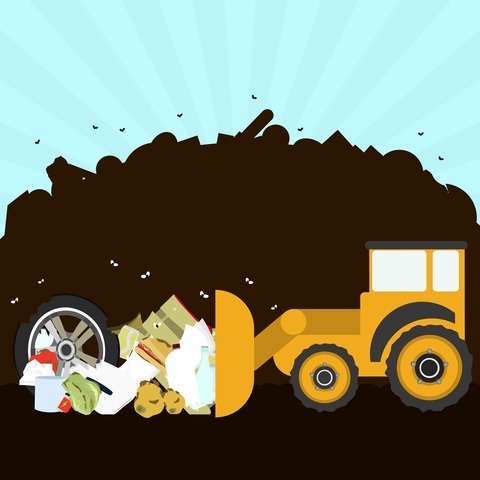
 Data Structure
Data Structure Networking
Networking RDBMS
RDBMS Operating System
Operating System Java
Java MS Excel
MS Excel iOS
iOS HTML
HTML CSS
CSS Android
Android Python
Python C Programming
C Programming C++
C++ C#
C# MongoDB
MongoDB MySQL
MySQL Javascript
Javascript PHP
PHP
- Selected Reading
- UPSC IAS Exams Notes
- Developer's Best Practices
- Questions and Answers
- Effective Resume Writing
- HR Interview Questions
- Computer Glossary
- Who is Who
What Is Bioaugmentation?
Introduction
Bioaugmentation is a biological technique used in environmental engineering to increase the rate of degradation of pollutants by introducing specialized microorganisms to contaminated environments.
The process of bioaugmentation involves the addition of bacteria, fungi, or other microorganisms to an environment in which they are not naturally present, to accelerate the breakdown of specific contaminants.
Bioaugmentation is often used to remediate contaminated sites, such as landfills, oil spills, and industrial wastewater treatment plants. In this article, we will explore the different aspects of bioaugmentation, including its history, applications, benefits, and challenges.

History of Bioaugmentation
The concept of bioaugmentation has been around for centuries. The use of microorganisms to degrade organic matter in wastewater treatment dates back to ancient times, where it was practiced by the Greeks and Romans.
In the late 1800s, scientists began to identify specific microorganisms responsible for degrading organic matter. In the 1900s, the concept of bioaugmentation gained popularity in wastewater treatment, and it was used to improve the efficiency of treatment plants.
Applications of Bioaugmentation
Bioaugmentation has a wide range of applications in environmental engineering, including wastewater treatment, bioremediation of contaminated soil and groundwater, and the management of organic waste.
The following are some of the common applications of bioaugmentation ?
Wastewater Treatment
Bioaugmentation is widely used in wastewater treatment to enhance the degradation of organic matter. In this application, microorganisms are added to wastewater treatment plants to improve the efficiency of the treatment process.
The microorganisms break down organic matter in the wastewater, converting it into less harmful substances. Bioaugmentation can also be used to treat wastewater from industrial processes that contain toxic chemicals.
Bioremediation
Bioaugmentation is an effective method for bioremediation, which is the process of removing or degrading contaminants from soil and groundwater. In this application, microorganisms are introduced to contaminated sites to break down pollutants. Bioremediation is often used to clean up sites contaminated with petroleum hydrocarbons, such as oil spills.
Organic Waste Management
Bioaugmentation is also used in the management of organic waste, such as food waste and agricultural waste. In this application, microorganisms are added to the waste to speed up the decomposition process, converting the waste into compost, which can be used as a soil amendment or fertilizer.

Benefits of Bioaugmentation
Bioaugmentation offers several benefits over traditional methods of environmental remediation, such as chemical treatments and physical removal. The following are some of the benefits of bioaugmentation ?
Cost-Effective
Bioaugmentation is a cost-effective method of environmental remediation, as it requires less energy and equipment compared to traditional methods. The process of bioaugmentation is also less invasive and disruptive to the environment.
Efficient
Bioaugmentation is an efficient method of environmental remediation, as it targets specific contaminants and accelerates the degradation process. This method also allows for the complete breakdown of contaminants, resulting in a cleaner and safer environment.
Environmentally Friendly
Bioaugmentation is an environmentally friendly method of environmental remediation, as it does not require the use of harmful chemicals. The process of bioaugmentation also promotes the growth of beneficial microorganisms, which can contribute to the overall health of the environment.
Challenges of Bioaugmentation
While bioaugmentation offers several benefits, it also presents several challenges. The following are some of the challenges of bioaugmentation ?
Selecting the Right Microorganisms
Selecting the right microorganisms for bioaugmentation can be challenging, as different contaminants require different microorganisms for effective remediation. The selection of the wrong microorganisms can result in ineffective remediation or even exacerbate the contamination.
Competition with Native Microorganisms
The introduction of non-native microorganisms to an environment can lead to competition with native microorganisms, which can result in the suppression of the growth of the introduced microorganisms. This can lead to ineffective remediation and a waste of resources.
Environmental Conditions
The success of bioaugmentation is dependent on environmental conditions, such as temperature, pH, and nutrient availability. If the environmental conditions are not optimal for the growth and activity of the introduced microorganisms, the remediation process may not be effective.
Regulatory Challenges
Bioaugmentation may face regulatory challenges, as it involves the introduction of genetically modified organisms (GMOs) to the environment. The use of GMOs may be subject to regulations, and the safety and efficacy of GMOs in environmental remediation may need to be demonstrated before approval.
Conclusion
Bioaugmentation is a powerful tool in environmental engineering that offers many benefits, including cost-effectiveness, efficiency, and environmental friendliness. The use of microorganisms to remediate contaminated sites has a long history, and the development of new technologies and knowledge has made bioaugmentation a more effective and reliable method.
However, bioaugmentation also presents several challenges, such as selecting the right microorganisms, competition with native microorganisms, environmental conditions, and regulatory challenges. As the demand for environmental remediation continues to increase, bioaugmentation will likely play an important role in addressing environmental challenges in the future.

